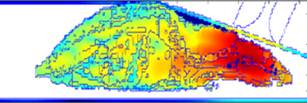German Research Foundation (DFG) Approves Collaborative Research Centre
German Research Foundation (DFG) Approves Collaborative Research Centre
The research project "Design, computer simulation and construction of an exposure system for experiments on age-dependent effects of high-frequency electromagnetic fields of mobile radio on developmental and differentiation processes of the central nervous system in juvenile laboratory rodents (StSch-8848)" is motivated by upcoming investigations on the potential effects of electromagnetic fields of GSM-900 mobile radio on brain functions of Wistar rats during their growth from the 14th day of life up to adulthood. For this purpose, an exposure or sham exposure system (i.e., without high-frequency field) was developed for up to 48 animals. Computer-aided field simulations were used to design and construct specially sized waveguides with connections to interchangeable plexiglass tubes of various sizes for fixation of the rats. The objective of the design was a preferential exposure of the brain with as uniform as possible spatial electromagnetic field distributions and specific absorption rate for all rats of a growth stage. For the realization of a simultaneous "multi-level" exposure with different groups of 12 animals each with SAR values between 0 W/kg and 10 W/kg (averaged over the brain), for which the required immission field strengths were calculated numerically with high-resolution anatomical 3D computer rat models, the high-frequency injection for the 48 waveguides was performed via a feeder network with fixed dimensioned division factors. This had the advantage of performing SAR calibration during the growth of the animals from juvenile to adult stage by simply adjusting the input power of the feeding network.
After exhaustive testing, the system was installed at Jacobs University Bremen and regularly checked and adapted to the requirements of the variable size of the animals during the approximately 18-month exposure period.
